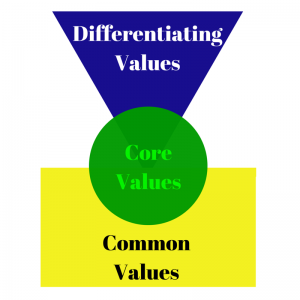7 Principles of Collaboration for Marketers
 To build a successful business and/or brand requires the help of others. It’s hard to do it alone. Great marketers have long understood the value of collaboration.
To build a successful business and/or brand requires the help of others. It’s hard to do it alone. Great marketers have long understood the value of collaboration.
As a differentiating value, Collaboration means independent parties working together on a common project. The hard part of getting various parties to work together is defining exactly the parameters of the “common project.”
This is especially true for long-term projects, such as developing a new software program or launching a new car. It’s also true for short-term projects, such as conducting a press conference or participating in a tradeshow.
There are some key principles that, if embraced, will help create the best possible environment for successful collaboration.
7 Principles for Collaboration
- Define Success. In addition to setting milestones, it is critical all parties understand exactly what the final goal or output looks like. Is it developing a brand new product that achieves 5% market share within 18 months? Is it lowering the price of an existing product by 20% but keeping the margins the same? Or maybe it’s getting your products on the shelves of a new distribution channel, or your brand message delivered to 200-targeted decision makers. The better success is clearly defined upfront, the better the collaboration.
- Assign Authority. In addition to establishing who does what and when, it is imperative that all parties know who has the authority to say yes or no at all points in time. If final authority rests with one party alone, all other parties need to know and agree to this upfront.
- Outline Boundaries. In addition to instituting overall project boundaries, it is helpful to have a few simple, working boundaries. This helps each participant make better decisions on the fly. These might include such useful rules as: everyone is treated with respect; these 3 people are to be cc’d on all emails; and all ideas must include the voice of the customer. Of course, unless rules are promoted and enforced they are useless.
- Promote Accountability. In addition to promoting the organizational benefits of the collaboration, each individual involved must understand what’s in it for them. Expanded experience, increased learning, opportunity to teach others, or test their ideas are all relevant personal objectives. If the individuals haven’t bought in, neither will their respective organizations.
- Reward Information Sharing. In addition to setting guidelines for how information will be shared between and among the various parties, it’s helpful to reward good behavior. Where there are people there are politics and power mongers. To fight back against human nature, reward desired behavior. This might include spot rewards by management when becoming aware of good sharing, or running contests where everyone votes on who shares the best, with the winner receiving something substantial (e.g. an all-expenses-paid vacation).
- Encourage Flexibility. In addition to being responsive to external, market-driven demands, it’s important to create an adaptive environment. There are many roads to the same goal. Be sensitive to the needs of each party, allowing for recommended changes, and encouraging ideas and solutions that delivers the best results. When the group arrives at a problem, they will know what to do.
- Build In Reviews. In addition to the regular reviews that will naturally occur over the life of a project, it is critical for each independent party to have designated moments to review the big picture and make changes. Is this still beneficial for each party? Have circumstances changed that would cause someone to pull out? Should the defined goal be altered? While there might be agreed-to costs associated with such decisions, providing an opportunity to suggest major changes to the final product or even pullout may be in the best interest of the common project and the various parties.
If you look at the root definition of collaboration it includes reference to treasonous cooperation. Yes, that should be scary. If interested, I wrote a blog post about the difference between collaboration and treason here.
The secret to successful collaboration is clearly defining the enemy. The rest is following a few sound principles, as outlined above.
What other principles should be considered for effective collaboration?
How can the value of collaboration make a difference in your marketing?
Today’s value was selected from the “Enthusiasm-Teamwork” category, based on the e-book Developing Your Differentiating Value.







